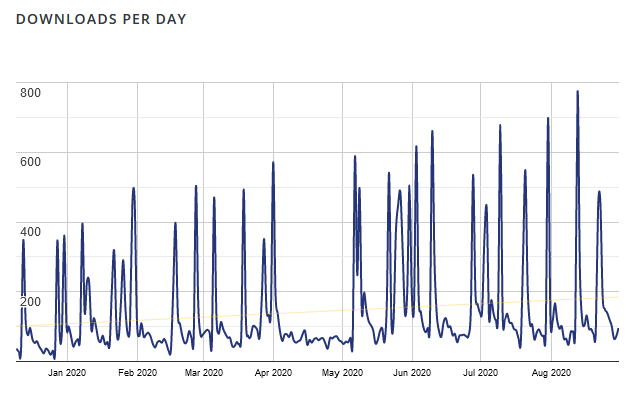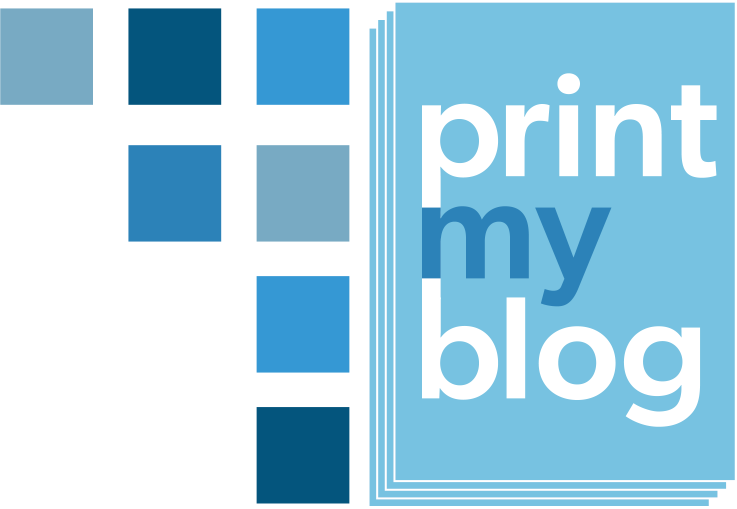Overview
This is the 17th monthly report for Print My Blog (PMB) WordPress plugin.
What Happened in This Month


Business Stats
- Hours:
- 70.75 (+2) support
- 93.75 (+3.5) marketing
- 192 (+14.5) development
- 36.5 (+4) management
- Expenses: $13,960.85 (+985.43)
- Donations: $483.53 USD (+11)
Plugin Stats
- Downloads: 53,096 (+5,558)
- Active Installs: 2,667 (+256, how I calculate this exactly)
- Languages: 3 (+0)
- Five Star Reviews: 45 (+4)
- Releases: 76 (+2)
Overview of What’s New
- Pro: Choosing and Arranging Posts/Pages/Custom Post Types
- Pro: Table of Contents
- Pro: Page References
- Pro: Footnotes
- Pro: Designing the Interface
- Improved WPML Integration
The Details
This month I made a ton of progress on Print My Blog Pro, getting it to a working prototype. I hope to get it ready for testing from Founding Members sometime in September. There were some pretty major features added to it which I’ll outline below.
Pro: Choosing and Arranging Posts/Pages/Custom Post Types

The first big feature to land in pro was this project organizer, which lets you grab posts, pages, and custom post types, and drop them into your book/project in any order you want. In the future it will let you filter content by post type, published date, author, etc. Founding Members have also expressed that dividing projects onto sections was important to them, which is in the works.
Pro: Table of Contents

With a little Javascript and Prince’s special CSS, Print My Blog Pro generates a table of contents with proper page references. What’s extra cool is that page numbering starts after the “front matter” (page content before the main body, including a title page, the table of contents itself, introduction, etc.) Before that point pages are numbered with roman numericals.
I made a video demo’ing with my eldest daughter, if you’re interested.
Pro: Page References

Another feature I think is pretty cool is automatically converting internal links to page references. What exactly it does: when Print My Blog Pro is generating a PDF, it looks for hyperlinks to blog posts/pages that are located elsewhere in the PDF. In those cases, it seems silly to leave the link to the website, because the content is already here in the PDF. So rather than send the user off to the website, I think its better to change the link to point to the page in the PDF that features that post/page (for digital PDFs) or replace it with a page reference, eg “see page 1”, for print PDFs.
I made a video demo’ing that too.
Pro: Footnotes

When you’re reading a printout of a post, it’s a major loss if hyperlinks are converted into regular text. Imagine reading a printout that says “Click here for a link to the sweet discount I’m talking about!” but you’re reading on a paper, not a webpage, so there’s nothing to click.
So what to do? Currently, Print My Blog gives you the option to add a reference to the link in parentheses. This is more useful, but often looks awful, especially with long hyperlinks.
Print My Blog Pro can instead convert those hyperlinks into footnotes, which looks way better and isn’t as jarring to the reading experience. I made yet another video demo’ing that, too.
I showed it to my dad when he was over for subs, and while he was encouraging, he still wasn’t quite satisfied. As a reader, he wouldn’t want to have to type out the hyperlink. The only way around that, that I can think of, is to also automatically add QR codes in the footnotes (so folks could just scan the QR code from their phone and be taken to the webpage of the link.) That would be more useful but
- I’m afraid it might be pretty intensive (that’s a lot of QR codes to calculate),
- it can take up a lot of space, and
- QR codes get hard to use if there’s a ton of them smushed together (you can’t know which one you just scanned.)
Still, if anyone shows interest in this I will pursue it further.
Pro: Designing the Interface
The biggest feature Print My Blog Pro is missing is options: you can’t customize the design or content at all, like you can with the free version. In order to add that, I need to introduce a few new pages of user interface.
So I recorded a video of me drawing with some markers to convey how I envision the interface will work, and have asked for feedback from the Founding Members. The video was 10 minutes long (I was aware I didn’t want to make it too long, but it ended up big anyway) so I don’t blame anyone for not having the time to look over it all and give feedback. But I would appreciate any feedback on it, before I spend probably a dozen hours building it.
Improved WPML Integration
My local WP buddy Scott tried Print My Blog on a site that uses WPML in order to have both English and French pages, but found it only printed the English ones. WPML is a paid plugin, which I haven’t needed personally, so I hadn’t yet tested it.
I Googled how to fix the issue, and Scott let me try out my fix on his site, and the rest was history: site visitors can now use Print My Blog to print posts and pages from any language on a WPML site. You cannot, however, filter posts by language (that would have been quite a bit more work, and I’m currently trying to focus on the pro version.)
Thinking Out Loud
Some Features Come Quickly, Some Come Slowly
I got the Table of Contents, Page References, and Footnotes all working in about a week, which was pretty cool and surprising. They mostly required a dozen lines of Javascript and CSS, it turned out. It seems quite rare that things are easier than they look, but this was one of those times! Before that, I had taken about a month to get the project organizer done (and by “done”, I mean “barely usable.”)
Almost All the Major “Pro” Features “Done”!
A few months ago I surveyed the founding members to find out which features were most wanted. Demand for all of the features were quite high, so I’ve basically been adding support for all of them.
So I have prototypes of all the following:
- ✅ Table of Contents
- ✅ Customizable Order of Posts
- ✅ Convert hyperlinks to page references
- ✅ Save Settings
- ✅ Custom Post Types
What’s Next?
These features were also requested in the survey and are in-progress:
- ❌Improved Automatic Page Layout/Design (currently it’s at about the same level as the free version, but Prince will allow for lots of slick improvements)
- ⚠ Customizable Templates (I’ve made some of the infrastructure for this, but it’s not all there yet. But I think WordPress theme designers will have fun using their CSS skillz to make cool books and magazines in WordPress.)
Once that’s done, I plan to:
- give users more options for customizability
- work on supporting larger projects (right now it will probably choke generating a PDF with more than a few dozen posts in it)
- test integration with major plugins the Founding Members indicated they use
- try it with the Founding Members and make it work well for them
Timeline?
I originally set a timeline of 1 month to develop the BETA version, 1 month to refine it, and then 1 month to prep it for release. So far it’s been about 2 months doing the BETA and it’s still not there.
I think my original estimate was just way low, especially when I would need to rebuild so much of the behind-the-scenes “infrastructure” code.
I’m also aware, though, that it’s easy to keep working on software forever. To avoid that, I think I should set a limit of one more month to get the BETA out and usable by the Founding Members. Then go back to one month for working on their feedback, and another month to just prep for release.
Better Get Back at It!
Please let me know your thoughts!

2 replies on “Transparency Report of August 2020”
Michael, that’s great progress.
You are hitting the features I care about. Towards the end you mention that a few dozen posts is the current practical limit. As you might imagine, that is low for some long-time bloggers. Let me point out that a tool like Calibre lets a user combine multiple PDFs or ebooks into one. So I can merge PrintMyBlog outputs for economic policy, science, and project tales into one.
Very informative news letter.
Robert
I’m awaiting the Pro version.